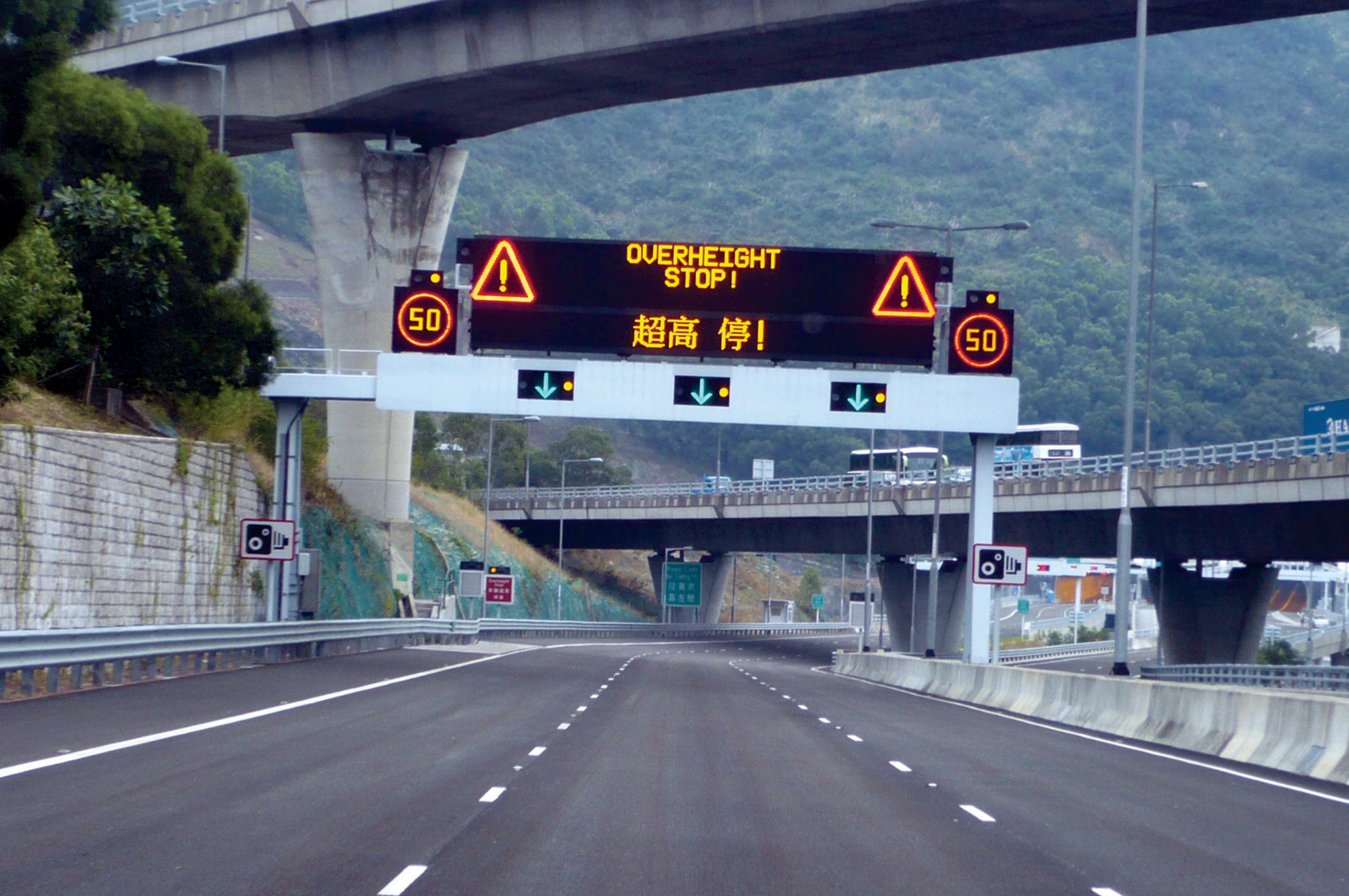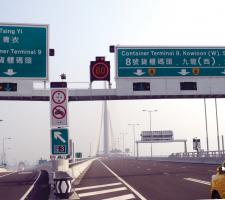
Every day, over 11.6 million passenger journeys are travelled within the province of Hong Kong, with about 610,000 vehicles using 2,076 kilometres of roads. There are approximately 290 licensed vehicles for every kilometre of road. Managing traffic in Hong Kong is never easy.
Over the past 20 years, to maximise the capacity of the road network and enhance road safety, the city has deployed advanced technology for traffic management. The city started Intelligent Transportation Systems (ITS) with extensive deployment of adaptive traffic signal control, CCTV cameras, and tunnel traffic control and surveillance systems (TCSS). There are currently seven adaptive traffic signal control systems and over 14 TCSS in Hong Kong. In the late 1990s, use of TCSS was extended to area-wide traffic management for Hong Kong’s road network of a mix of highways, bridges and tunnels.
In recent years, the focus has shifted to integrated management of the city’s strategic road network, with deployment of traffic speed mapping, journey time indication and the latest initiative of planning for an area wide traffic incident management system.
This move from deployment of isolated systems to integrated traffic management and supply of network-wide traveller information represents the typical challenge that many agencies are facing today; addressing the need for interoperability and standardisation of data. The Route 8 TCSS is the latest to interface with adjacent traffic management systems and provides data links for traffic information integration.
The Route 8 Traffic Control & Surveillance System
The Route 8 project is a new 13.5 km section of the Route 8 highway, which connects the existing Tsing Ma Bridge with the town of Sha Tin in the New Territories.
The Tsing Ma Bridge connects Hong Kong Airport on Lantau Island to the Hong Kong mainland. On this new Route 8 section, there are three 3-lane twin tube tunnels, the longest being 2.1km. There is a 1.6km cable-stayed bridge over Rambler Channel, which connects to Hong Kong’s container port facilities, and a small 0.7km 2-lane enclosed highway section.
For providing this complex stretch of highway with the most extensive and advanced TCSS in the region, there were basically two major challenges – the size of the system and the complexity of the traffic operations. The central TCSS system was responsible for managing all of the field subsystems. There were over 3,000 field devices from at least a dozen different vendors and the goal was to provide integrated operations. As such, this represented a massive integration and commissioning exercise. In terms of complexity, the Hong Kong government recognized that it was virtually impossible for a human operator to effectively respond to a traffic situation where potentially several hundred signs and signals were involved. And because of the complexity of the road network and tunnel contraflow operations, there were tens of thousands of possible traffic scenarios, so using a predefined plan approach was not feasible.
We provided a rule-based plan method, whereby a finite set of rules would deal with all possible traffic scenarios. The idea is fairly simple: if dealing with a single stretch of road, a simple rule can be used. For example, for an incident blocking a single lane, close the lane 700m upstream and provide warning to the motorists for the next 1.5 km. But, because the Route 8 network consists of three tunnels all with the capability of contraflow operation plus dozens of interconnecting ramps, there were so many exceptions to the basic rules that it became unmanageable. We eventually came up with a technique able to take into account various operational conditions and combinations with a manageable set of rules. As far as we are aware, the techniques developed have never been used in such a complex traffic network.
Complexity and innovation
The system incorporates more than 1,000 different types of traffic control signs and signals, such as 15 full matrix variable message signs, 160 variable speed signs, 488 tunnel lane signals, 322 matrix lane signals, and 131 variable prismatic signs. Traffic management, especially for tunnel contraflow and wind management for wind conditions, demands simultaneous control of hundreds of field devices. The intelligent functions in the system greatly reduce operators’ loading and eliminate human errors. To support the complex operations for Route 8, the TCSS has an automatic incident detection function using multiple detection algorithms (APID, McMaster, and Queue Warning) and video imaging technology. The operator is provided with guided event management functions supported by advance rule-based plan generation capability.
The Route 8 TCSS incorporates a rule-based response plan module to respond to incident, queue, planned events (eg, scheduled roadwork) and various adverse weather events.
The TCSS rules for Route 8 reside not only in the decision-making logic in selecting the plans, but also in selecting the appropriate field devices to generate the planned responses. The rule-based response will be generated and recommended to the operator based on the type, severity and location of the event, the operational state of the tunnel (eg, in contraflow) input by the operator or system and the availability of response devices (devices may be ununavailable due to maintenance or equipment failure).
Integrated rule-based design
The rule sets in the Route 8 TCSS control all of the visual field response subsystems targeted at the road users, including full variable message signs (FVMS), lane control signals (LCS), variable speed limit signs, prismatic variable message signs, ‘turn on radio’ signs, and radio messages (such as radio break-in messages in tunnels).
To provide greater flexibility to address various objectives of the field devices, customised display rule sets are defined for specific individual type of field devices.
The rule sets for some devices are more complex than others. For FVMS they define the sign selection criteria, the message type, the message format and the display of the appropriate message in a single step. The rule sets for LCS define the signal selection criteria, the display aspects, as well as a safe sequencing of response (both spatial and temporal) to change from the current signal displays to the appropriate display aspects. The sequencing of response of rule sets for LCS is also required to account for various lane configurations and the different lane blockage patterns.
All of the customised display rule sets are designed by the traffic engineers based on a set of operational principles that account for various human factors. Moreover, the rule sets for various field devices can be applied at the same time, and the responses will be consolidated and prioritised based upon other sets of arbitration rules. Special principles are also defined to account for transition areas, such as tunnel approaches and exits.
Many systems only have rules for individual device types, such as lane and speed control. In North America, rule-based design is mostly limited to dynamic message sign operations. The Route 8 rule-based engine employing XML technologies is the most flexible architecture to support integrated operations that seamlessly handle real-time mix of lane management, speed management, warning, passive and active diversion, etc. If an agency is looking for error-free, consistent operations of a complex active traffic management system with various forms of interacting traffic management strategies, this architecture offers flexibility to implement the control measures that they want.












